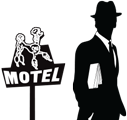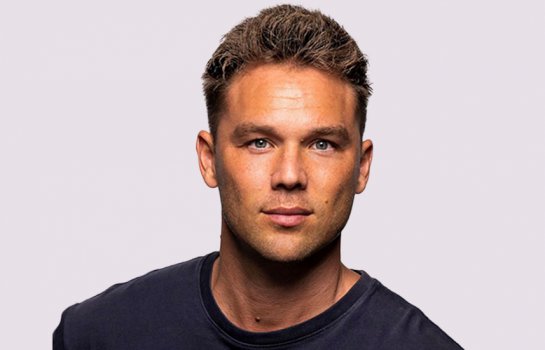Natalie Weir, choreographer, 7 Deadly Sins
It’s an amazing thing to have as a job, if I made it as a dancer I would have been long finished but as a choreographer I can continue to develop my art form ...
Wrath, greed, sloth, pride, lust, envy, gluttony, they are the seven deadly sins and the inspiration behind Natalie Weir’s latest production with the Expressions Dance Company. Spotlighting the inherent frailty and imperfections that exist in us all, 7 Deadly Sins explores the age-old sinful nature of mankind retold through electrifying contemporary dance. The show has finished wowing audiences at QPAC and is coming to The Arts Centre Gold Coast for two nights only on Friday September 11 and Saturday September 12. The Weekend Edition Gold Coast caught up with the internationally renowned choreographer to get some insight into this devilish new production.
7 Deadly Sins is coming to The Arts Centre Gold Coast. What can audiences expect from the show?
It’s a strong contemporary dance work inspired by the themes of seven deadly sins. It’s very physical and really quite beautiful. It’s set around the idea of a man who is watching television and his conscience starts to wander and as that happens he produces seven boxes, inside these gold boxes are each of the seven sins. Each of the sins is revealed one at a time until all of the sins are unleashed, a little bit like a Pandora’s box has been opened and we go through a very emotional, physical journey.
How did the idea come about?
Actually, now that it’s on one of my friends from school reminded me that we did a funny version of it way back in high school but I don’t know that it came from there. As Artistic Director of Expressions Dance Company, I am always looking for ideas and I was looking for something that could showcase each of the seven dancers individually in an equal way rather than featuring one or the other. I came across this idea and the more I researched it the more it seemed to have a lot of fodder for dance.
How did you go about creating physical traits for each sin?
We had a creative development and rather than assigning roles, each of the dancers investigated all seven sins in the rehearsal room. I cast it after that depending on which dancer took to which sin. It was quite remarkable the amazing physicality that came from the dancers, obviously some of them were harder than others, gluttony for example. I have beautiful fit dancers but he took on an animal-like physicality that was constantly foraging for food or consuming anything in his wake. Sloth was another one that we thought would be quite hard but it ended up being quite beautiful as she sort of lounges on the man and catches a ride with him when he walks.
Do you have a favourite sin in terms of its physicality?
I love them all because each dancer has put a lot of effort and artistry into them but the one I’ve kind of kept as the deadly sin is wrath. Physically it’s the most extreme of all of them and when she enters the space right at the end she infects everyone and it becomes very physical.
What do you hope the audience will learn, feel or take away from the experience?
I think there are several layers to it. For people who love dance obviously there’s amazing physical dancing, it’s designed by Bill Haycock so it’s all set in gold and black and it looks beautiful and there is a story although I don’t try to make a judgment about the sins of human kind. We’ve just finished an amazing season at QPAC in Brisbane, it sold really well and the audience just loved it. I think it’s the most beautifully accepted piece that I’ve done, we’re really thrilled to be bringing it to the Gold Coast next week.
What were some of the biggest challenges with this production?
There are always challenges when you are creating a new work but this one has gone very smoothly. We’re really trying to make sure that the audience could understand what each sin was so that they could really go on that journey and I think we’ve done that quite well. It seems to be quite a novelty for people to pick the sin.
And the greatest rewards?
The fact that it has been so well received is the greatest reward because ultimately that’s why we are here, we want to create art people connect with. The reviews have all been fantastic so at the end of the day you really feel like you’ve created something together as a company that has really touched people.
How long did it take from conception to the stage?
Behind the scenes stuff starts quite early, I had the idea of what I wanted to do and I started to work with the designer Bill Haycock about 18 months ago. In terms of actually bringing it to the company we had the four-week creative development period early this year but then we left it and went on to other things and then we had a six week rehearsal period.
Boxes play a big part in the staging, what’s the symbolism?
We just started thinking about framing things and Pandora’s box. The boxes are representative of the idea that they are in a big warehouse of crates and the man, through his imagination, unlocks them.
What inspires you?
The dancers are my biggest inspiration. Once you’ve got the idea you get into the studio and you’re working with the dancers not only on a physical level but you really have to engage their imaginations as well. They take me on pathways that I never would have thought of myself so it is a really true collaboration.
How important is that connection with the dancers?
Well for me it’s everything. I spent most of my career as a choreographer freelancing so I would go to a company, make a work and then I would leave but I began to think there must be more I can do with this skill to have a bigger impact but also to make better work, that’s why I came to this company as Artistic Director. I wanted to make work with a group of dancers on an ongoing basis because the more you get to know these people and trust is established, the better the work.
What originally attracted you to physical performance?
I grew up in Townsville and mum took me to ballet when I was five and really it became a passion very early. I studied ballet all through my childhood years and then came to Brisbane to QUT, which was Kelvin Grove College then, to study dance. Choreography was part of the course and it was noted that I had a talent and I gave up dancing at 18 to really focus on my choreography. It has been my passion ever since. It’s an amazing thing to have as a job, if I made it as a dancer I would have been long finished but as a choreographer I can continue to develop my art form.
What words of wisdom can you offer people who perhaps want to head down a similar path?
It’s a difficult one to break in to and just because you’re a dancer doesn’t necessarily mean you have a choreographic spark so you’ve got to have a bit of talent there or at least a really strong interest. The best way to create is to practice, like anything else, you learn by your mistakes and successes. In my early days I choreographed everything I could from theatre restaurants to musicals, I even choreographed a cheer squad at one stage. The other thing is to be proactive. Start to do small works and film them and send them around to companies to try and get work. Don’t give up hope because you get knocked back, keep on trying.
You’ve created over 170 professional works and have been awarded some of the industry’s highest honours including ten Helpmann Award nominations, what have been some of the highlights?
It’s a 30 year journey from when I started my practice so I’ve choreographed for many amazing companies, too many to pick the highlights! Then the awards have been the icing on the cake, they aren’t something that you can expect and it’s certainly not why I do my job but to have something acknowledged by your peers in that way is amazing.
What’s next for you?
Just giving my head a break, it’s been a big couple of months culminating in the premier here!


